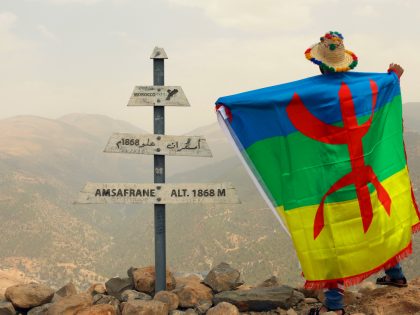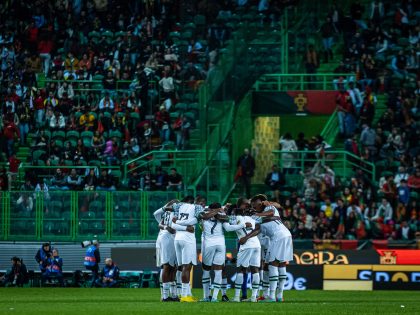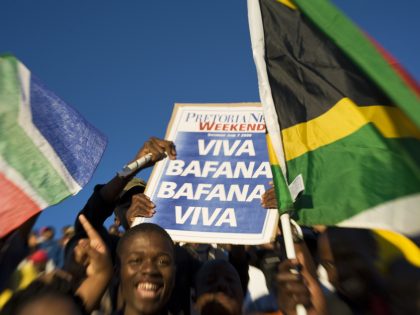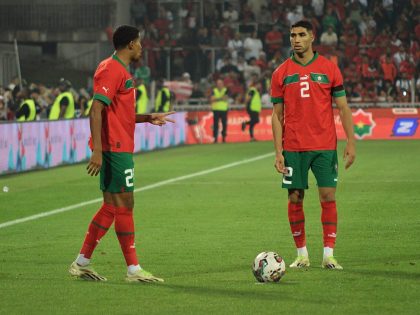The Kenyan version of the war on terror
Why the wall Kenya is building on its border with Somalia is a terrible idea.

Image: EU Civil Protection and Humanitarian Aid via Flickr CC.
For the last year, Andrew Franklin, a former US marine and now security consultant in Kenya, has been advocating for the construction of a separation barrier between Kenya and Somalia. He dubs it the Somalia Border Control Project, and it will include militarized instruments such as “physical and electronic barriers along the entire border” and the “laying of properly marked and mapped minefields,” among other interventions.
A few days before the most recent Garissa attack, numerous National Youth Service trucks equipped with building material were seen headed to Mandera to begin work on a separation barrier. Though not to Franklin’s specifications, as he would assert in a television interview, the wall in its present iteration is still a nod to his Somalia Border Control Project, and is viewed by the Uhuru government as necessary to enhance security.
Notwithstanding the fact that construction of the wall has begun, and will likely gain more support after the attack in Garissa, there have been no consultations with local communities, nor has this wall even been debated in parliament. Like most actions in our Kenyan version of the war on terror, executive decrees become taken up as law under the veneer of national security.
The M.P. for Wajir West, Abdikadir Ore Ahmed, is fearful that this project has not considered the pastoralists who have homes and livelihoods in both Kenya and Somalia, nor the peoples whose lineage and relationships defy geographic boundaries. In addition, he asserts that the free movement of people on humanitarian grounds in light of forthcoming Somali elections in 2016, which may prove particularly heated, will be curtailed. In such a scenario where they did need to come to Kenya, what they would likely encounter are a border wall, mapped minefields and electronic barriers.
Furthermore, little thought has been spared for the refugees, most of them female and young, who would be affected by the calls to shut down Dadaab camp and that are coupled with support for the building of the separation barrier.
If construction of the wall continues and the camp is indeed shut they will face increasing uncertainty about whether they can ever come back if they need to, despite the fact that many of them were born in Kenya and it is the only country they have ever known.
It is likely that this wall takes inspiration from Kenya’s close political and military partners—the U.S and Israel, who have constructed their own apartheid walls to keep out “illegal migrants” and “suicide attacks” without historically examining just who the real illegals and attackers may be.
It is also important to question who will receive the economic bounties from this wall, and whether this process is characterised by the same irregularities as the safaricom integrated communication and surveillance system tender. Perhaps highlighting the possible benefactors of this barrier, Franklin asserted that “Kenya’s foreign allies in its war against terror are willing to support security related infrastructure development – as has been done elsewhere (e.g. Afghanistan, Kurdistan, Djibouti) – and the government needs to put forward its case for no strings attached financial assistance without delay.” Lessons from Afghanistan, Kurdistan and Djibouti unequivocally illustrate that there is never any “no strings attached” financial assistance from foreign “allies.”
While a seemingly large segment of the population has expressed support for the wall, ostensibly, to curb the entry of “illegal” Somali immigrants who are blanketly assumed to be al-shabaab, it is interesting that we Africans forget that the border itself is an illegal colonial construct. Frontiers, not people, are the real “kwerekweres.”
What is also forgotten in these calls is that we have much more to fear from within our borders than from without. If we are to build it we are enclosing our own terror, in its multiple and violent manifestations, that is a consequence of our ongoing complicity in the historical marginalization of North Eastern Kenya, and our uncritical support for KDF and Amisom in Somalia; actions that make many North Eastern residents wonder if they were ever really Kenyan.
Therefore, military actions that seek to dismember Somalia are not solutions. Nor are similar actions within Kenya, such as the rounding up of Kenyan Somalis in Kasarani concentration camp in 2014, as well the frequent raids in Eastleigh which were part of Usalama Watch. Rather, what is required, and as Mamhood Mamdani and others argue, is a political solution and not a military one which may only become part of an ongoing cycle of violence.
Additionally, it will work towards further dividing the continent and will highlight that Uhuru’s declarations of Pan-Afrikanism (which seem to apply conveniently only with regards to the ICC) are not grounded in any real sense of oneness.
If we were really serious about African unity, about national healing and about being Kenyan, we would organize vigils for both Kenyans killed by al-shabaab, as well as Somalis killed by KDF while questioning their real motives in Somalia. We would not have defended Kasarani Concentration camp nor condoned the Eastleigh raids.
Instead we cry reactively over spilt milk, and refuse to ask ourselves proactive questions that could protect all of our children. As a consequence, it is inevitable that this barrier will reveal the real depth of our inaction that should have been rectified from within, and not from outside the imminent border wall.



















